When observing the career of Thomas Reis, it is obvious to see where his allegiances lie. As a player, Reis played for VfL Bochum from 1995 to 2003 and featured for the club 176 times. Within a manager’s context, Reis has woven through many Bochum teams, having managed their women’s team in 2011, Bochum’s youth teams from 2013 to 2015 and now, coaching at the first-team level from 2019. When taking the position as head coach, Bochum were stationed within the 2. Bundesliga, but it did not take long for Thomas Reis’ ideas to take shape on the pitch, resulting in his team winning the second division title and promoting to the top flight. Most teams in their first season after promotion do not look very high when evaluating where they can finish, hoping to just stay alive. This thought may have crossed the minds of Bochum coaches and hierarchy, but this has not been the case, as Bochum are the surprise package of the Bundesliga.
Die Unabsteigbaren find themselves 11th place in the table, which can be viewed as a massive achievement, along with beating Bayern Munich 4-1 and a derby day draw against Borussia Dortmund. There are instances when league position is not the best indicator to showcase the level of a team. This can be due to a team slightly over/underachieving within certain metrics, such as goals scored and conceded. With the use of advanced metrics, we can get closer to evaluating just how good a team is. Regarding Bochum, they sit 11th in the xPTS (points) table. It is apparent that their 11th place position is no fluke, so far. Football is unpredictable and ever-changing, meaning Bochum, in the future, will struggle in the coming years within the top division as the league’s quality improves and the need for a squad overhaul, as the West German side have the second-oldest squad in the Bundesliga.
Regardless, Thomas Reis’ style of football may be effective, despite it not being noted as the prettiest on the eye. Within the tactical analysis, I will be piecing together what makes Bochum such an interesting side, regarding their ways of progressing forward and defensive tactics.
First Phase Tendencies
Beautiful football connotes interchanges within attack, short passing exchanges and wonderful team goals. While this type of football is stunning to watch, we must not forget there are other ways to win football matches. Atlético Madrid’s Diego Simeone is a perfect example of this; perhaps going against popular choice at elite clubs in 2022 with his brand of football, playing the way he sees fit. Thomas Reis’ Bochum is quite similar to an extent, as mentioned prior, football is not the prettiest, but when sitting 11th within your first season in the top-flight, it does not matter. This is not to suggest that Atlético Madrid and Bochum do not turn on the style; both teams are organised and effective upfront and make the most of their talent pool.
When painting the picture of Thomas Reis’ side, it is fair to say, they are not a pass-heavy football team, which can be perceived through data and on-pitch observations. On a statistical basis, Bochum average 43% possession, ranking them 15th in the league. Additionally, Bochum average 276 passes per game, which would position them 2nd bottom among Germany’s elite. Bochum’s preference is a long-ball approach, as a way of progressing the ball forward.
Thomas Reis utilises either a 4-3-3, 4-2-3-1 or 4-1-4-1 formation, and as the formation may change between games, the principles remain the same. Within the first phase, Bochum inclines to create a back three; with the team’s number six, normally Anthony Losilla, or the goalkeeper, Manuel Riemann, joining the first line of possession. This way of playing is effective as it can create numerical superiority against two opposition pressers, or at least have an even matchup against a pressing front three.
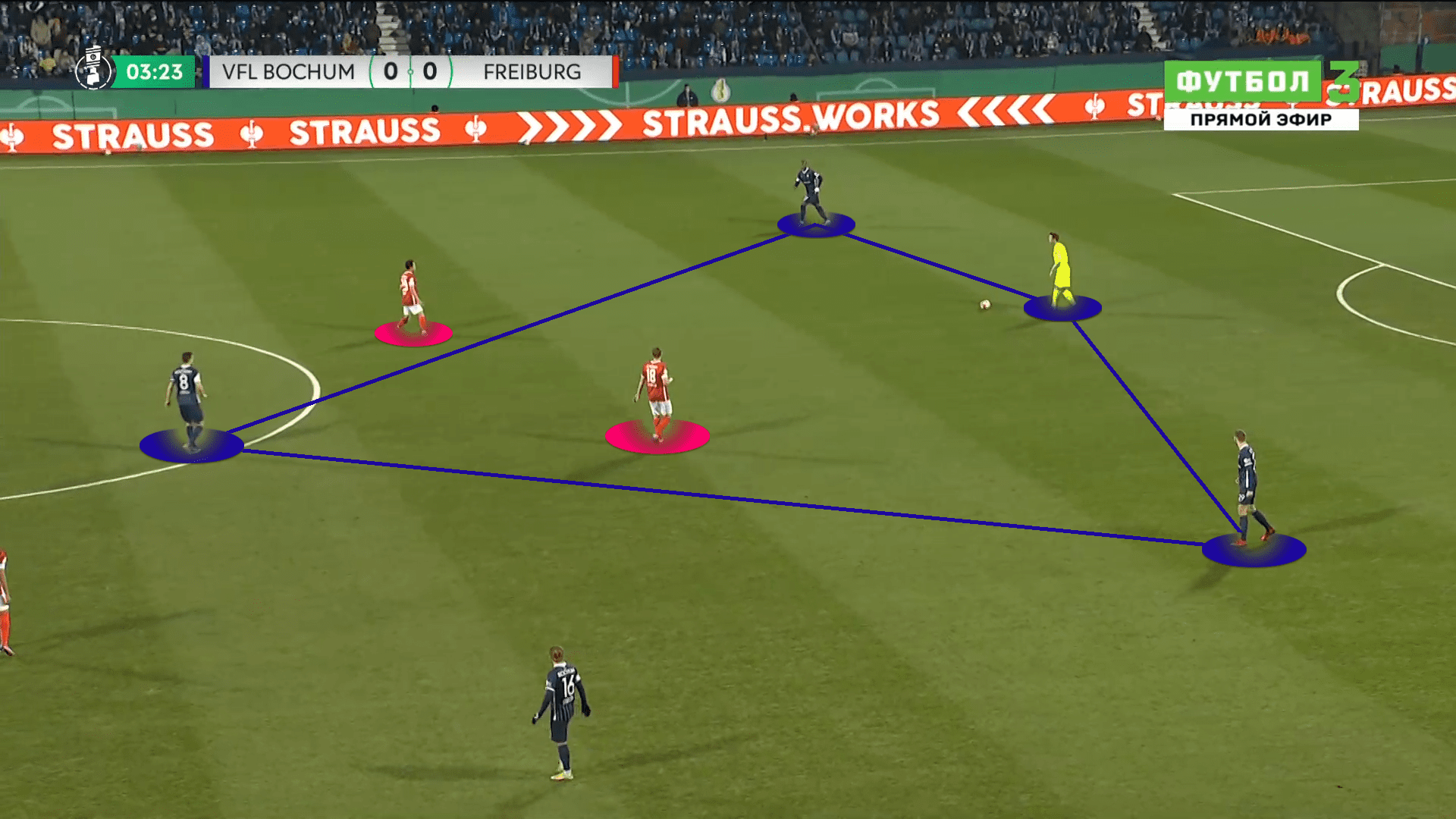
Bochum’s number 1 plays a giant role within the team set-up; due to his accurate distribution. The goalkeeper is quite comfortable on the ball, as he can pivot across the box and be a viable passing option. Further, the man between the sticks can swiftly change the direction of play and knock the ball wide to a full-back in space.
During the build-up, the positioning of their full-backs is quite conservative, as they operate hugging the touchline, but do not pitch up high up the field. Left-back, Danilo Soares, like the goalkeeper, is an important piece to his team’s forward progression. With his ball carrying and dribbling ability; Bochum utilises his skillset, as a large majority of their attacks occur on the left side.
Thomas Reis’ Bochum is a perfect example of a direct play-style, aiming to play over the opposition defensive structure rather than through them. His team use a ball progression method that is quite straightforward and immediate, mixing this with intelligent space occupation.
Here, goalkeeper, Manuel Riemann sends a long ball to the left-back Kostas Stafylidis. While the ball is travelling, the ball-side central midfielder, Elvis Rexhbecaj directs his movement backwards, resulting in SC Freiburg full-back Lukas Kübler pushing forward. With the space now created in behind, Holtmann can exploit this space and progress into the final third.
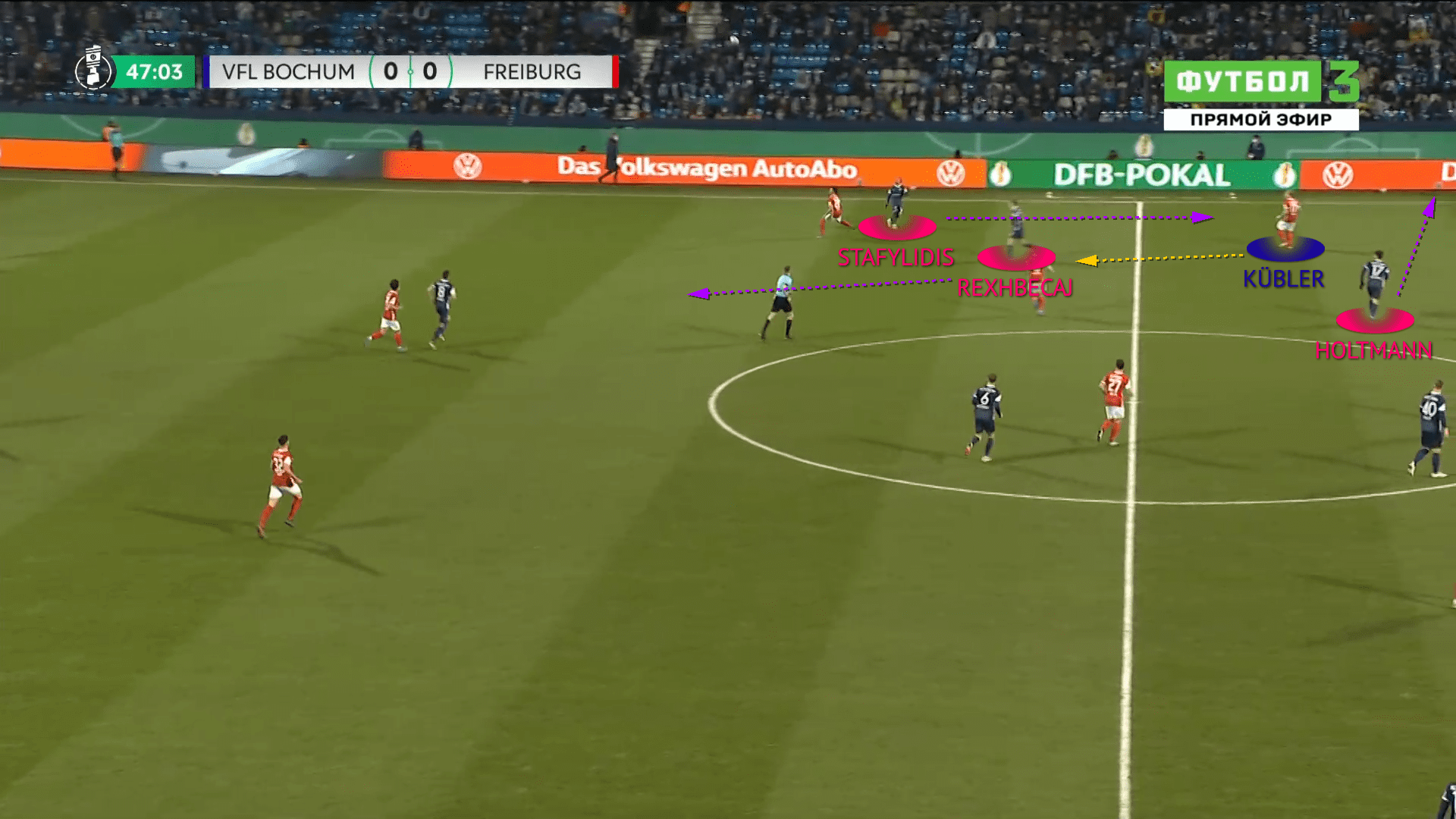
Defensive Strategy & Pressing
A common phrase used within elite sports is ‘defence wins championships’ — a phrase very applicable to Bochum’s current predicament to some degree. Thomas Reis’ side will not be Bundesliga Champions in the near future, but sitting mid-table is the equivalent to a championship in their case. Bochum has the seventh-best defence in the league and has accumulated an xGA (goals against) of 42.36, which is the 11th best tally in their division. Regardless of their slight defensive overachievement, Bochum have been strong at the back, with defending that can be interpreted as quite brave.
Bochum’s defending begins from the front; Thomas Reis employs a man-to-man marking system to neutralise attacking threats from goal kicks. Depending on the opposition, Bochum are comfortable pressing with a front three with a double pivot just behind, or within a 4-2-3-1 formation to deny access to their opponent’s number 6. Bochum averaged fifth in the entire Bundesliga for pressures in the attacking third, showcasing their intent from the front.
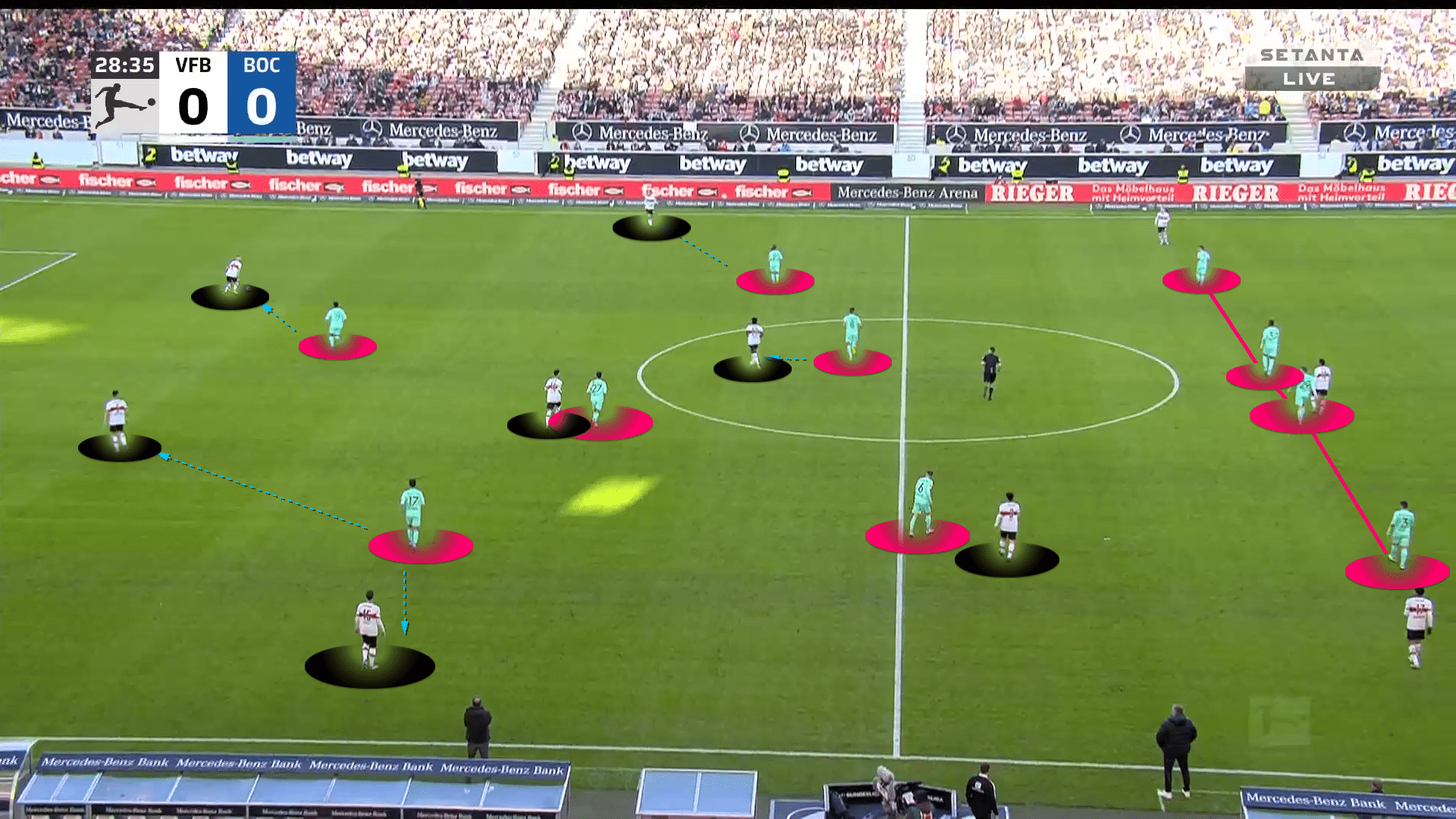
The team from West Germany likes to apply pressure, using a high line of engagement, pinning in their adversaries. Centre-backs Maxim Leitsch and Armel Bella Kotchap are perfect illustrations of Bochum’s aggressiveness, as both defenders amass a good deal of pressure per 90. Thomas Reis has instructed centre-backs, when needed, to break the defensive line and track their runner as they receive the ball.
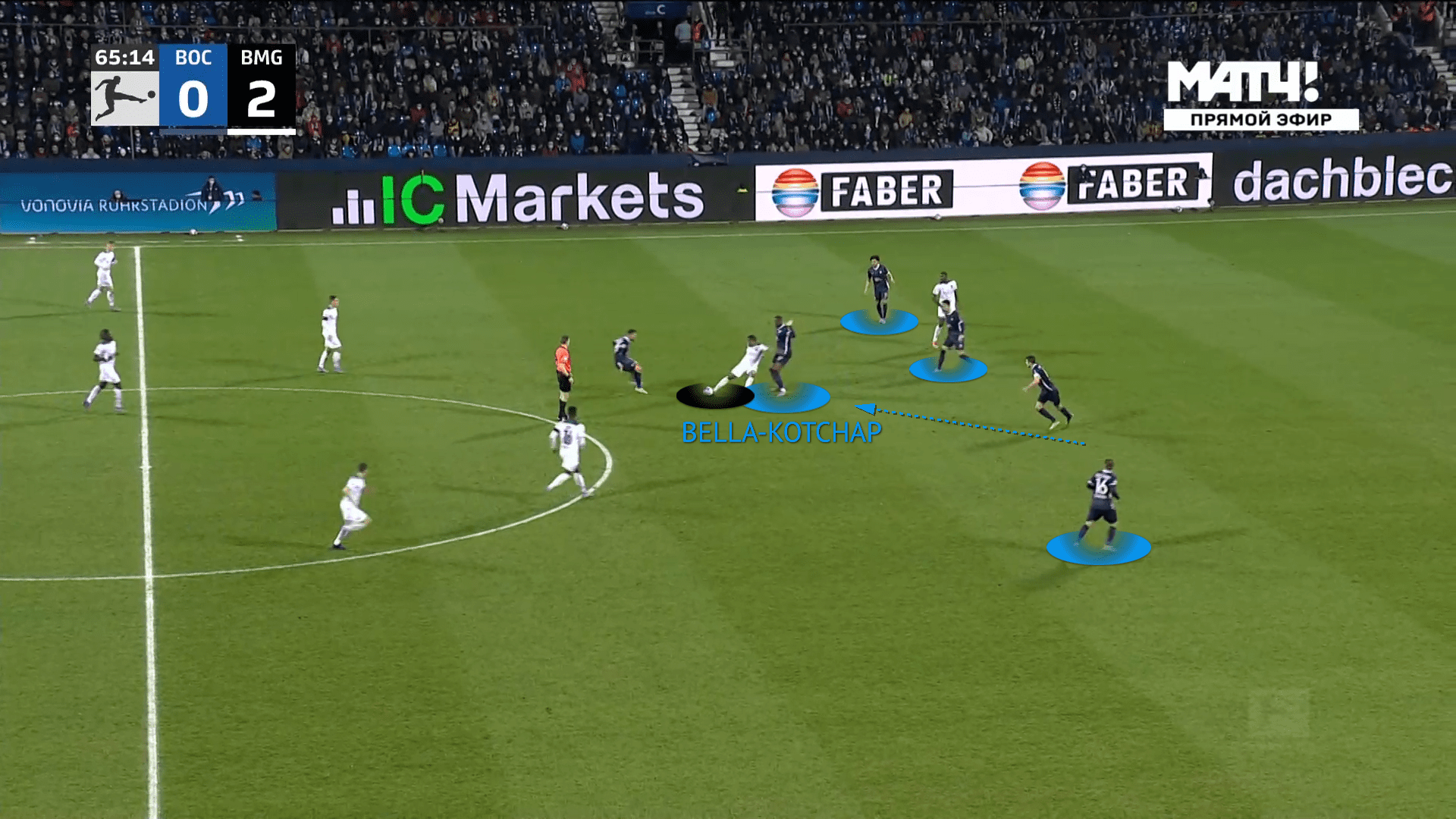
While making good use of their man-oriented pressing, Bochum has found some success with their counter-press. Upon losing possession, Reis’ men look to retrieve the ball as quickly as possible, whether in central or in wide areas. If this measure is not successful, Bochum will transition into their customary 4-5-1 low-block. When deep within their box, Reis’s defenders put in the hard yards, as they are all defensively active within their own third. Bochum averaged second in the league for clearances, second for tackles in the defensive third, third for clearances and fourth for shots blocked.
Shot-Creation
As mentioned throughout, Bochum are a very direct team who go for the throat. They use long-balls to enter the final third, and their plan when within this zone is evident. Because Bochum’s style of play is quite direct, their build-up and shot-creating actions can occur in one fluid motion. Because of this, a few other build-up principles are visible during their final third play. With this being said, Bochum’s rotations are a massive weapon within their attacking arsenal, as they can create adequate space for crossing opportunities. A common theme within these rotations is the positioning of the winger, full-back and ball-side central midfielder. The full-back will occupy a wide position, maintaining team width, while the number 8 will operate within the half-space, with the nearby winger parallel within the same vertical zone. The winger’s position is quite important, as they’re required to occupy the opposition’s centre-back.
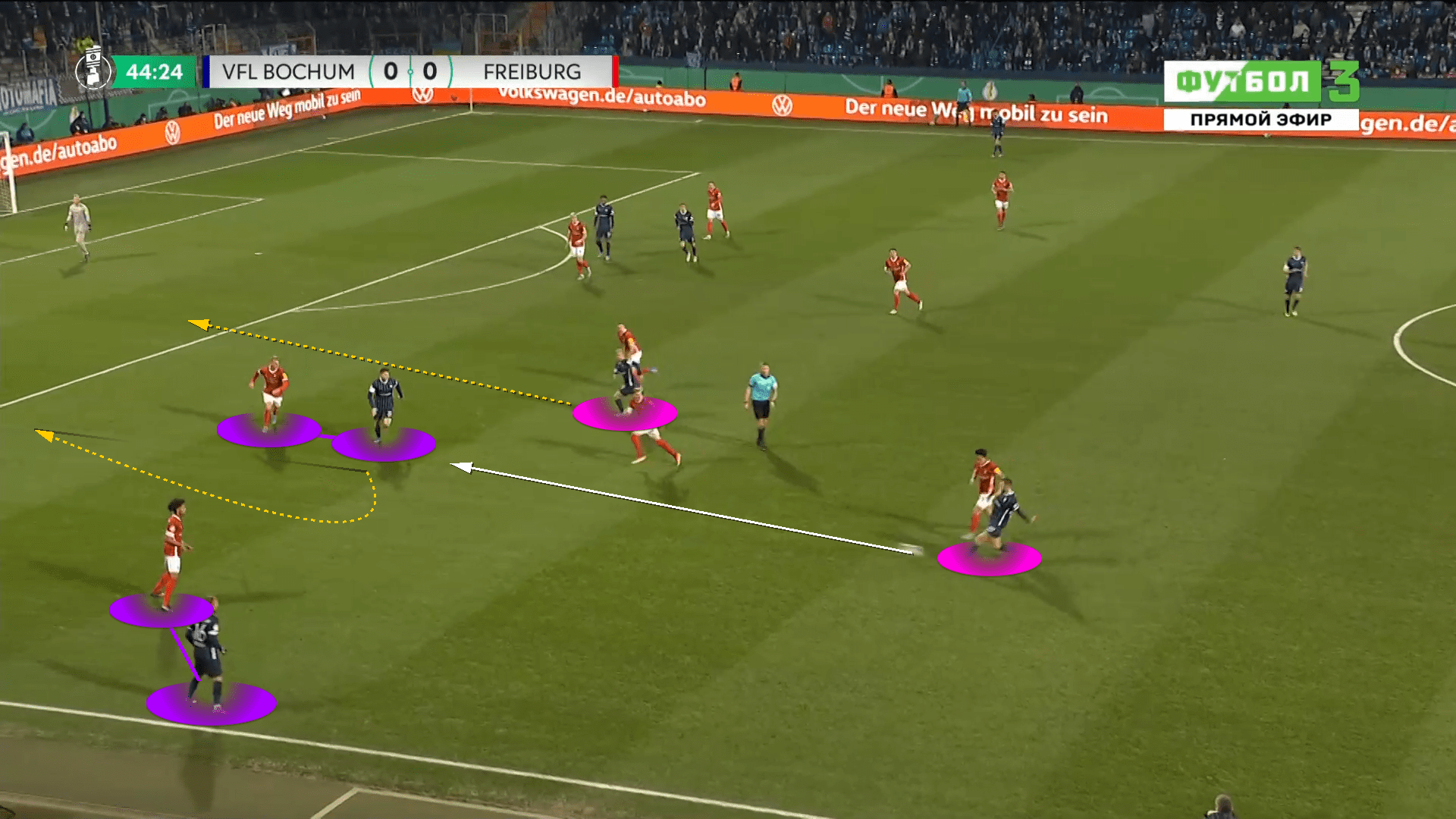
Thomas Reis utilises his 6’3 target-man up-front, Sebastian Polter, as a way to accelerate attacks and retain the ball within the attacking third. For goal kicks and long-ball situations, Polter will be used as an aerial focal point and will drop slightly deeper to win the flick-on. When this occurs, both wingers take up a narrow position, acting as make-shift strikers reacting to the ball, and making runs off the last defender.
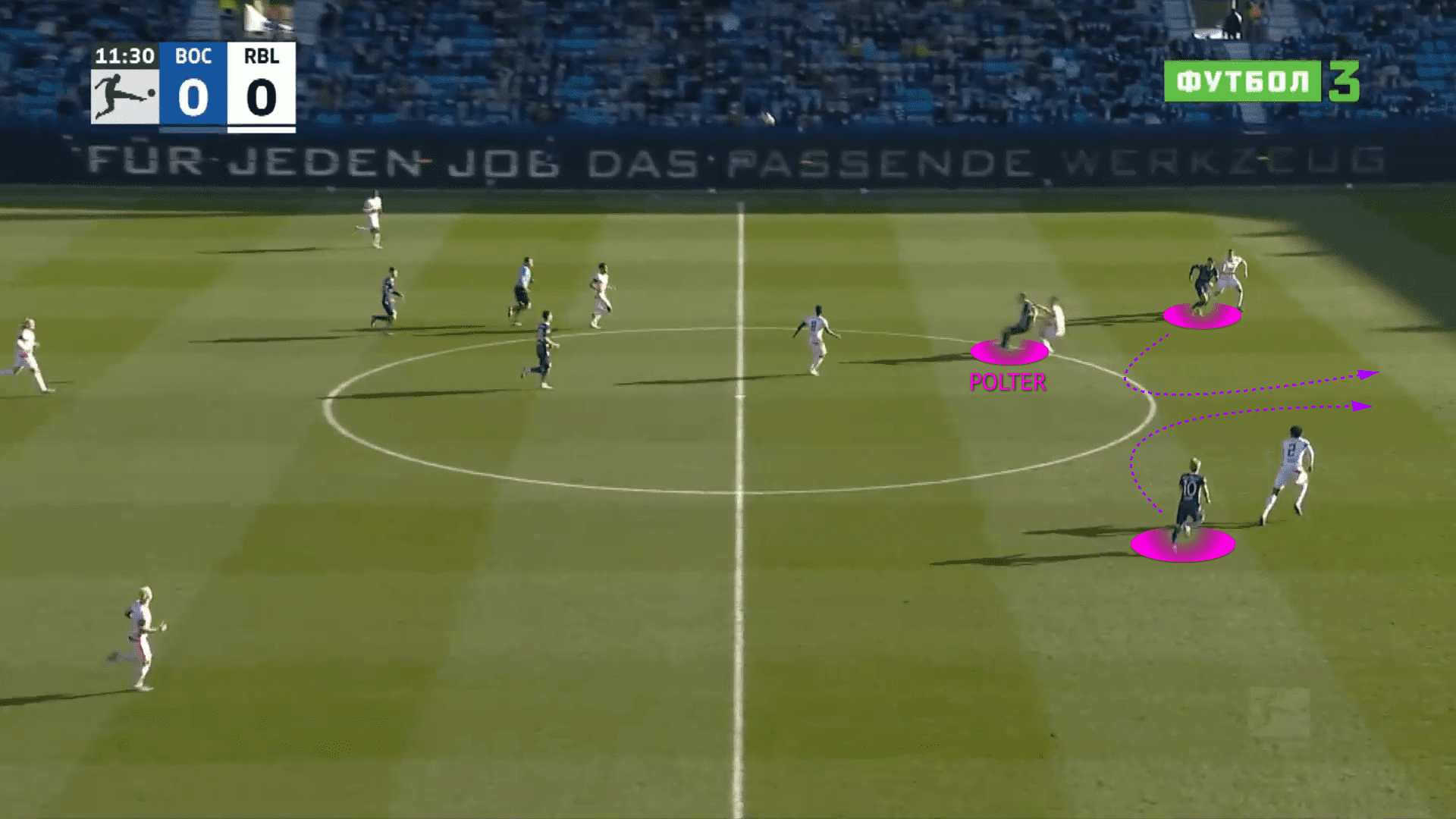
Conclusion
Bochum’s mid-table standing is a massive achievement for all involved, especially reminding ourselves they were in the 2. Bundesliga exactly one year ago. As a viewer of football, we can, at times have a fascination with how the football looks aesthetically, and it’s this lens we use to judge the quality of football.
Within the elite level of the sport, there is no such thing as style points, and effectiveness is king. Bochum understand this principle and this is evident in the way they play. No play style is right or wrong, as long as it corresponds with the talent within the coach’s disposal. Thomas Reis has mastered this to great effect, as relegation back to the second division seems a long way away.

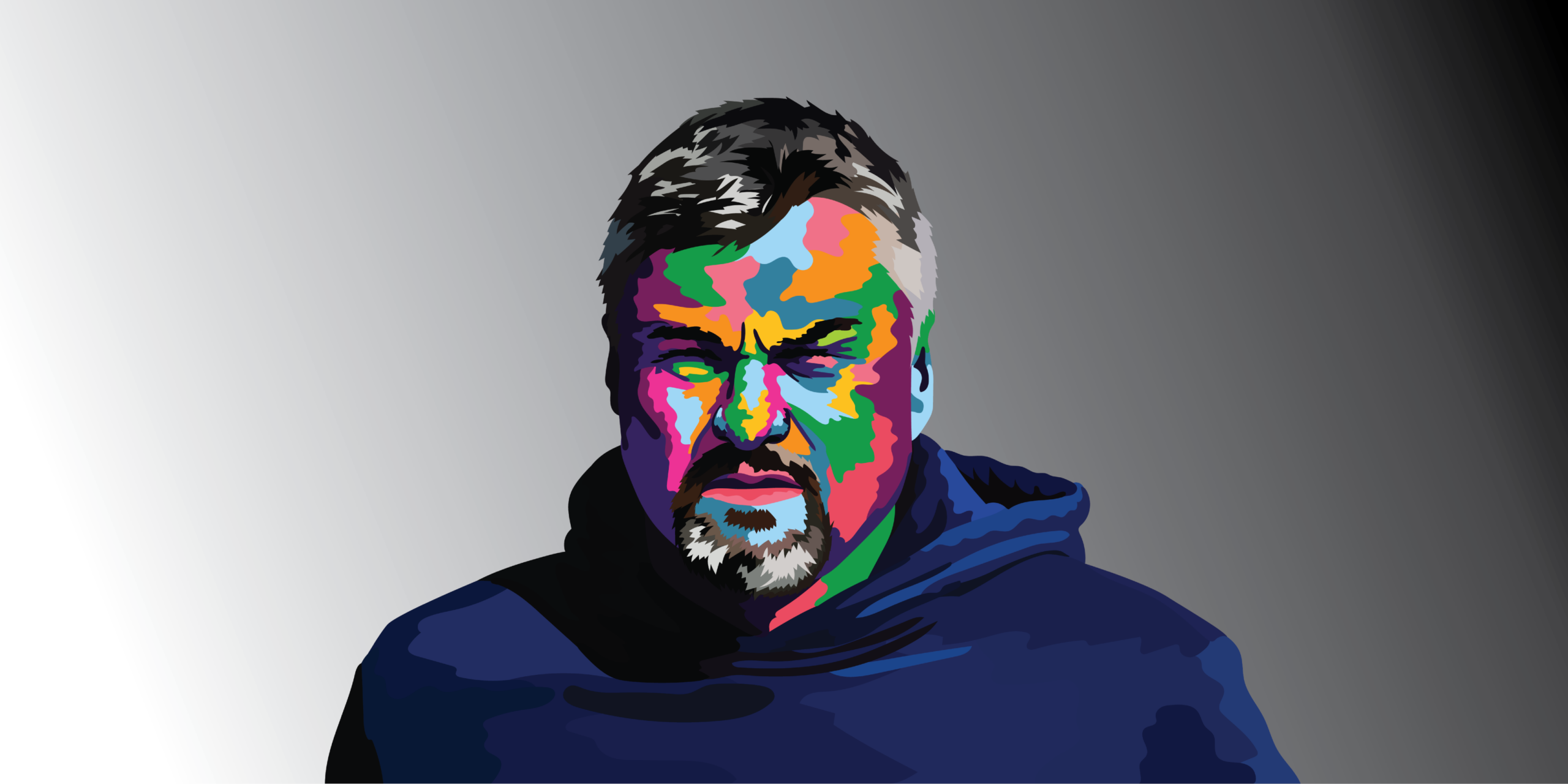




Comments